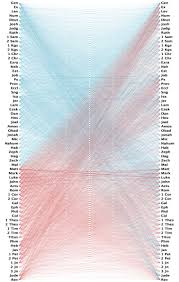In this week’s class presentation, we will begin to look at some of the amazing facts and evidences that help us have confidence that what we are reading in the Bible today is God’s Word! The reliability, historicity and authenticity is confirmed in so many ways. We will also spend some time reviewing the Bible study questions from last week as we finished up the book of Job, and move into the study of Abraham and beyond. Each week’s class will include prayer, review, a presentation and a homework assignment.
Watch the class presentation on this week’s topic:
Overview Notes from the presentation
2023 A Case for the Old Testament
Session 3, Part 1: The Bible Apologetics
Prayer and Reflection
- Write out your prayer cards and exchange them at the end of the class.
- From last week’s class: What is the “Big Picture” of Genesis 1-11? (You can just list the main themes/events)
- Recite to practice the memory verse below from your study in the book of Job:
Memory Verse
“As for me, I know that my Redeemer lives, and at the last He will take His stand on the earth.” Job 19:25 (NASB)
Review
Last Week’s study and context for the book of Job (answers posted mid-week)
Bible Apologetics
Historical and Literary Facts About the Bible
- The Christian Bible is made up of 66 individual books (39 in the Old Testament and 27 in the New Testament), written by 40 different authors, over a period of about 1,500 years, and from 10 different countries
- The Bible has a cast of 2,930 characters depicted in 1,551 places
- The Bible’s human authors (inspired by God) came from various stations of life: Kings, peasants, poets, herdsmen, fishermen, scientists, farmers, priests, pastors, tentmakers, tax collectors, doctors and governors
- The Bible was written in extreme places like the wilderness, dungeons, palaces, prisons, on lonely islands, and in military battles
- The authors wrote on various subjects, including the unknown future
A Literary Masterpiece!
Amazingly the books of the Bible are so united in their historical and narrative themes, and so remarkably linked to one main storyline, that it is considered by scholars to be a “Literary Masterpiece!”
The Bible is the best-selling book of all time with billions of copies sold since the invention of the printing press, and the Bible meets and exceeds all historical and literary requirements for excellence based on scholarly academic standards…
Scholarly standards include evidence from the following areas:
History – Archeology – Literature – Theology – Science
A Christian Apologetic Tool
MAPS-S
We will look at this acronym over the next few weeks…
M=Manuscripts
- Estimate of 17,000 ancient Old Testament manuscripts and over 25,000 early New Testament manuscripts with 5800 in the original Greek language – the scholarly field of textual criticism finds a 98% agreement for Old Testament and 99.5% agreement for New Testament – add in early lectionaries and quotations from the 1st – 3rd century leaders we can assert 100% accuracy.
- The Bible is a primary source document and contains multiple eyewitness accounts of events, including hostile witnesses, and the New Testament accounts of the first century (AD/CE) life of Jesus and the early Church were written within the lifetime of the people involved in the events (completed by the mid to late first century AD/CE).
- Bibles today, like NASB, NIV or KJV, have only been translated once from the original language.
- Old Testament = Hebrew (some parts of Daniel and Ezra are in Aramaic)
- New Testament = Greek
- Bibles today, like NASB, NIV or KJV, have only been translated once from the original language.
Cross-referencing the Bible:
The Bible supports the Bible
One of the most amazing things about the Bible is that it supports itself. All 66 books written hundreds of years apart, and in some cases over a thousand years, support and reference each other. At times when you find a difficult passage, or concept, it is helpful to find other places in the Bible where it is talked about.
One of the main reasons we know we have the right Bible, and books therein, is that they all reference each one in one way or another. The chart below captures the 2800 references in Scripture (taken from Gary Bates and Lita Costner’s book “How Did We Get Our Bible?”):
Cross References…
- are usually listed in the side or middle margins of a study Bible.
- help support the section of Scripture you are studying by showing other locations in the Bible where you can find similar themes, further information, or confirmation of the subject.
- help in doing word studies.
- are powerful because they show the commonality in thought and theme across both the Old and New Testaments.
- show the unveiling of God’s redemptive plan throughout history from Genesis through Revelation.
- were used by Jesus and the Apostles as they regularly quoted from the Old Testament.
- validate the authors and books of the Bible as they quote each other, and help eliminate the so-called missing books of the Apocryphal and Gnostic writings.
Cross-referencing examples:
Jesus often referenced the Old Testament:
- “Jesus replied: “Love the Lord your God with al your heart and with all your soul and with all your mind. This is the first and greatest commandment. And the second is like it: ‘Love your neighbor as yourself.’ All the Law and the Prophets hang on these two commandments.”” Matthew 22:37-38 (NIV—New Testament)
Cross-reference with…
- “Love the Lord your God with all your heart and with all your soul and with all your strength. These commandments that I give you today are to be on your hearts.” Deuteronomy 6:5-6 (NIV—Old Testament)
Jesus showed throughout His ministry that He was the fulfillment of what is written about Him in the Old Testament, and that He is the LORD:
- “I am the good shepherd; the good shepherd lays down His life for the sheep.” John 10:11 (NASB—New Testament)
Cross-reference with…
- “The Lord is my shepherd, I shall not want.” Psalm 23:1 (NASB—Old Testament)
Note: Jesus uses the phrase “I Am” throughout the Gospels, an Old Testament reference to YHWH/God.
Jesus also said (concerning the Old Testament):
- I tell you the truth, until heaven and earth disappear, not the smallest letter, not the least stroke of a pen, will by any means disappear from the Law until everything is accomplished. 5:18 (NIV)
- This is what I told you while I was still with you: Everything must be fulfilled that is written in the Law of Moses, the Prophets and the Psalms. Luke 24:44 (NIV)
- Jesus speaking to the Jews on a Sabbath Day said… You diligently study the Scriptures because you think that by them you possess eternal life. These are the Scriptures that testify about Me, yet you refuse to come to me to have life. John 5:39-40 (NIV)
Examples of a topical cross-reference:
Lust of the flesh, lust of the eye and pride of life: This is emphasized in Scripture as the reason for the fall of humankind, and the reason for evil and suffering we endure in this life. Jesus’ overcame these three things in the wilderness temptation, and near the end of the New Testament John warns the Church of this very thing:
- Genesis 3: The Fall
- Matthew 4: Jesus’ overcomes Satan’s temptation
- 1 John 2: John’s warning to the early Church
Bible Study
Each week we will have Bible study following the presentation. There will be questions presented here on the weekend, and basic answers will be part of the next presentation or posted mid-week for your review, depending on the topic. This can also be used to make a leader’s guide for your own small group and future studies!
Always remember to pray before you study and ask the Holy Spirit to teach you and lead you into the truth found in God’s Word – pray for protection from the evil one who will try to discourage, distract and deceive us when we commit to growing closer to the LORD.
Note: Questions are taken directly from the chapters, and answers should be found and cited from the Scripture text in order to be Biblically accurate (unless asked to summarize in your own words). Study Bibles, commentaries and your own thoughts can be used for Discussion or Going Deeper questions. If you use these kinds of sources share them with your group.
1. Review of Class Topic: With your table group, discuss today’s presentation by summarizing what you learned, commenting or asking any questions.
Cross-Referencing Practice
2. A final look at the book of Job: As we move back into the book of Genesis, we will trace the genealogy from Noah’s son Shem through to Abram (God later changes his name to Abraham). Take a look at Genesis 10:21-30 then cross-reference with Job 1:1-3. There are two names in Shem’s genealogy that can be attributed to Job (where he lived and his full name), along with a description of the land where they lived at that time. Can you find them in this passage?
3. Background check: In order to follow the “Seed” Promise and the unfolding of God’s Covenant from Genesis 3:15, we must return to Genesis and investigate the lives of the Patriarchs as they will be an important key in tracing the Scarlet Thread of Jesus! Who are these “Patriarchs” of Genesis?
Read Genesis Chapters 11:10 through 12:9 with your group then, to the best of your ability, answer the following questions:
4. What direct genealogical line (following the Seed Promise) can we draw from Shem (Noah’s Son) to Abram (11:10-27)?
5. Cross-reference Genesis 11:28-12:1 by reading Stephen’s history review (as he defended the Gospel) in Acts 7:1-5. Where was Abram when God called him, where did he settle, and where was he supposed to go according to God’s command?
6. Cross-reference Genesis 12:1-9 by reading Hebrews 11:8-19. What does this tell us about Abraham?
7. Application: How can we model Abraham when we are faced with tough decisions and situations? Do you have any experiences to share where you trusted God’s Word to guide you?
8. Going Deeper: Cross-reference the promise God made in Genesis 3:15 and the command He gave in Genesis 1:28, 9:1 and 9:7 with the promise He makes to Abram in Genesis 12:1-3. What are the three main things that God promises to Abram and how do these all connect?
Please join us each week as we continue our case for the Old Testament!
———————————————————————
You will not find this material in the public school curriculum even though it is based on solid evidence and grounded in research. It is ironic that following the evidence to where it leads stops at the door of our public schools as they will not let a “Divine footprint” in! Join us as we examine evidence for Christianity and learn how to become a thoughtful defender and ambassador of your faith.
Click into the resource page of this website to view many of the top Christian thinkers and apologists along with some of their work; connecting to these types of resources is essential in your Christian growth.
Please let me know what you think: Give feedback, ask questions or send concerns in the comment section of the blog.
Teri Dugan
TeriDugan@truthfaithandreason.com
1 Peter 3:15




Sorry, comments are closed for this post.